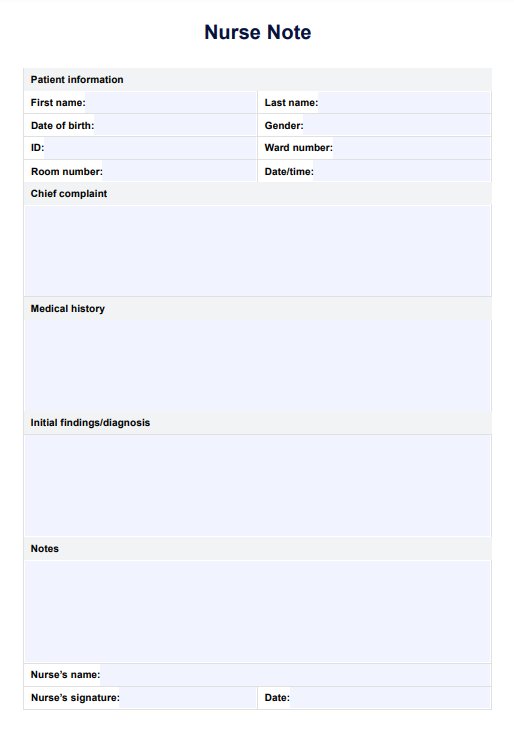To write a good nursing note, ensure that it is clear, concise, and accurate. Document relevant patient data, including vital signs, symptoms, interventions performed, and the patient's response. Avoid jargon and abbreviations that may lead to confusion. Additionally, ensure that notes are timely and reflect a complete picture of the patient's condition and care provided.

Nurse Note Template
Get a head start with a structured approach to writing your notes with our free PDF Nurse Note Template.
Nurse Note Template Template
Commonly asked questions
An example of a bad nursing note would be one that is vague, incomplete or lacks clarity. For instance, a note stating "Patient seems okay" without specific observations or data fails to provide useful information for other healthcare providers. Notes that contain spelling errors or excessive jargon or are written long after the event can lead to misunderstandings and compromise patient care.
A nursing progress note should include essential elements such as the date and time of the entry, patient identification details, and a summary of the patient's current condition. It should document any changes in vital signs, symptoms observed, interventions performed since the last note, and the patient's response to those interventions. Additionally, it should outline any new assessments or plans for ongoing care to ensure continuity and clarity in patient management.
EHR and practice management software
Get started for free
*No credit card required
Free
$0/usd
Unlimited clients
Telehealth
1GB of storage
Client portal text
Automated billing and online payments











